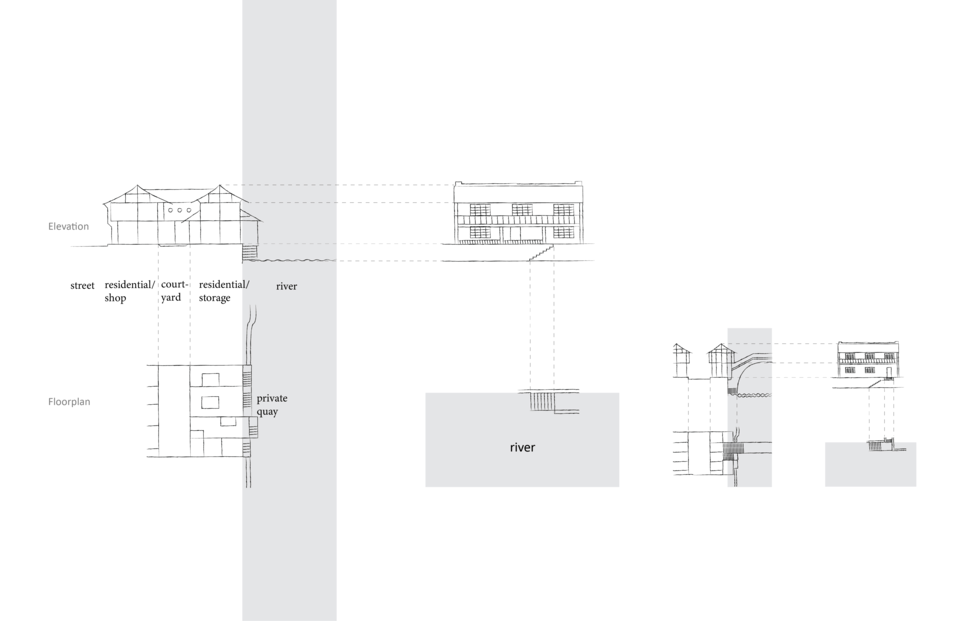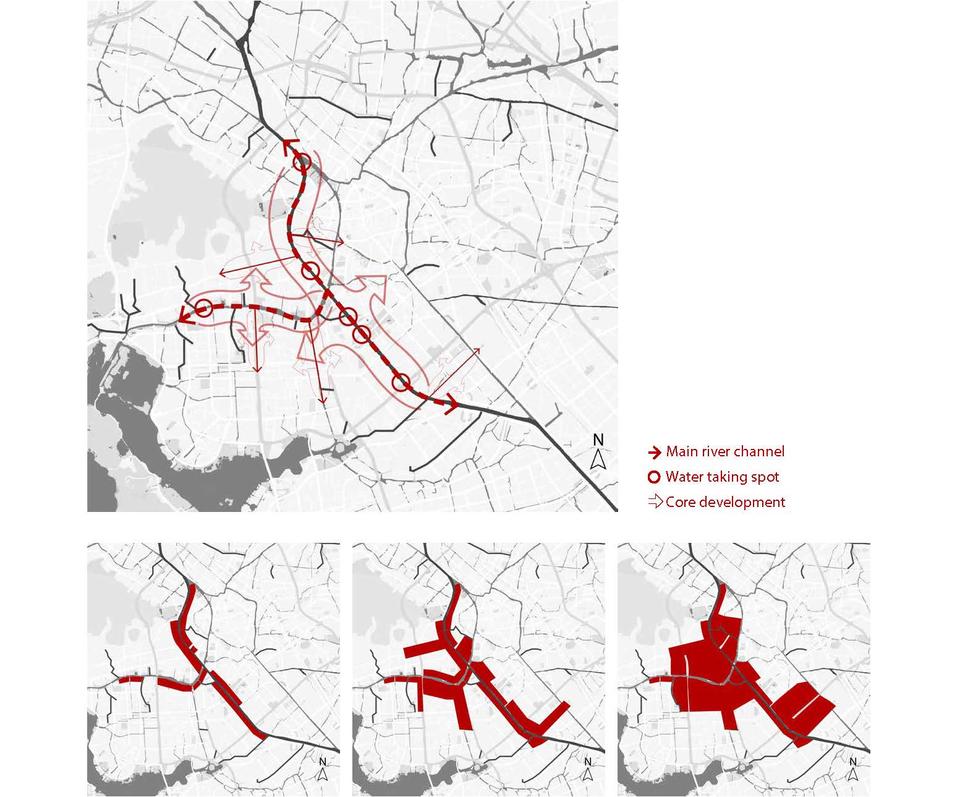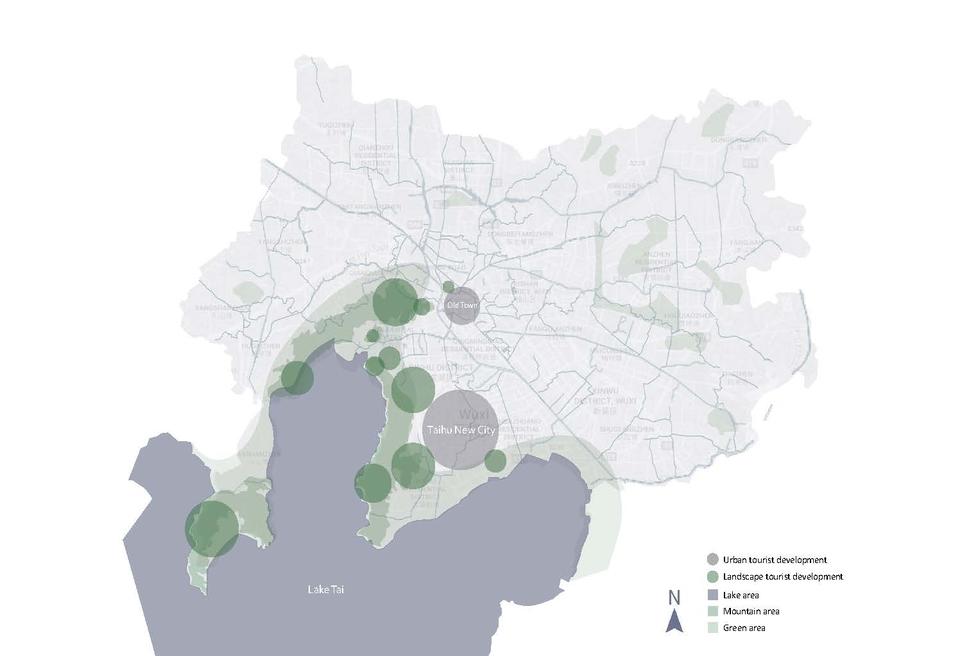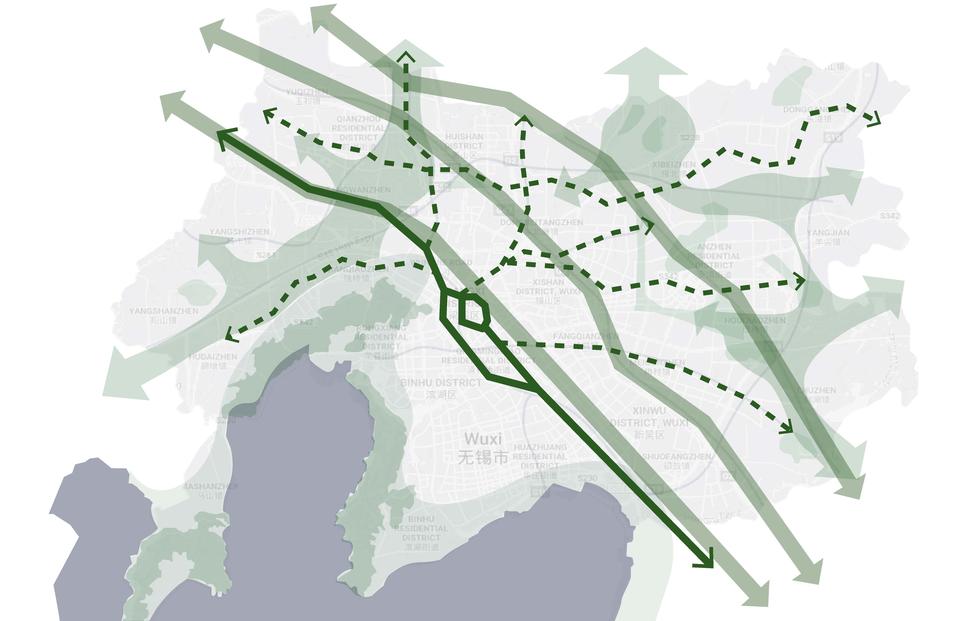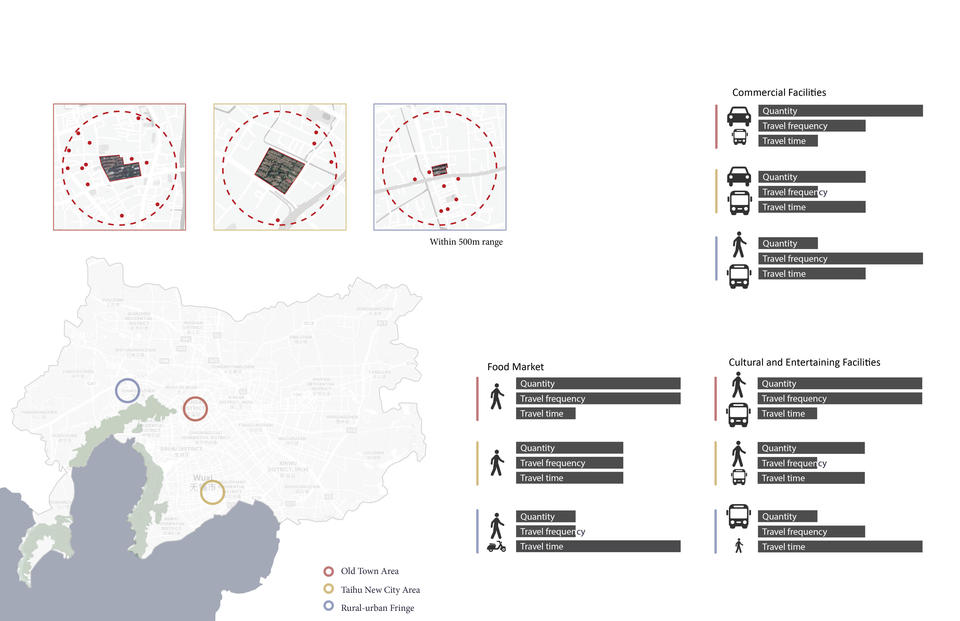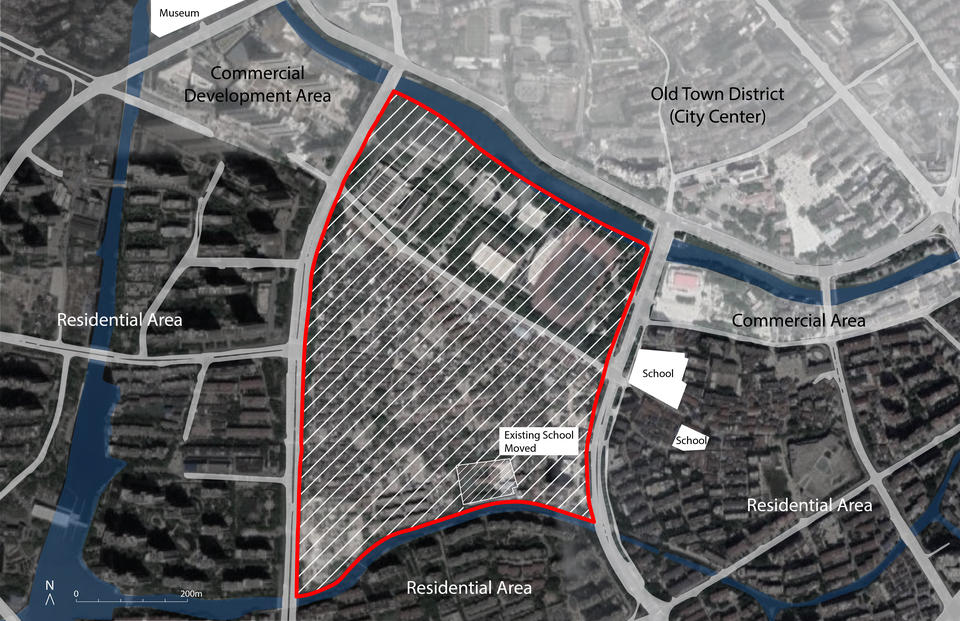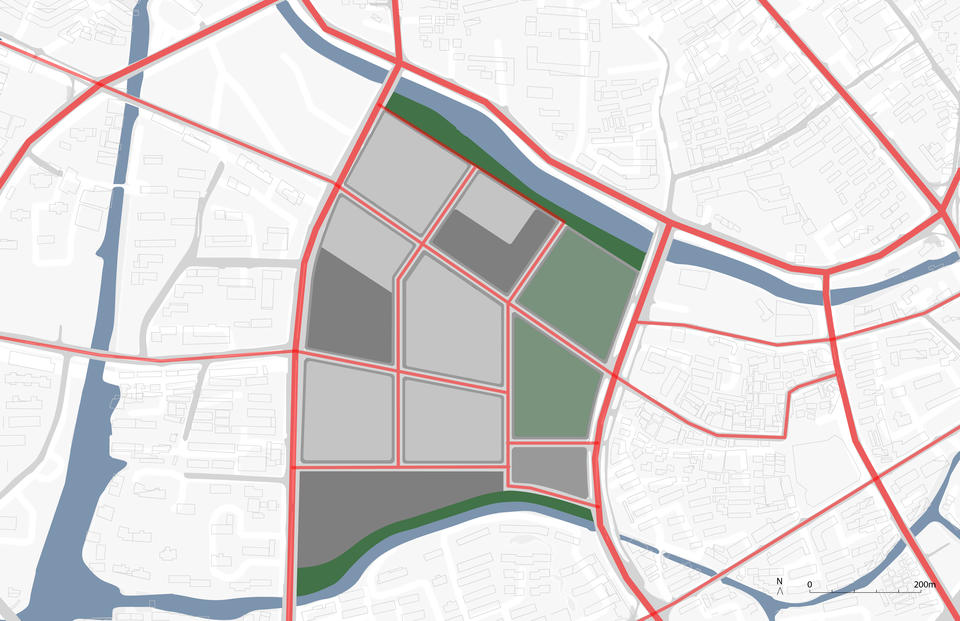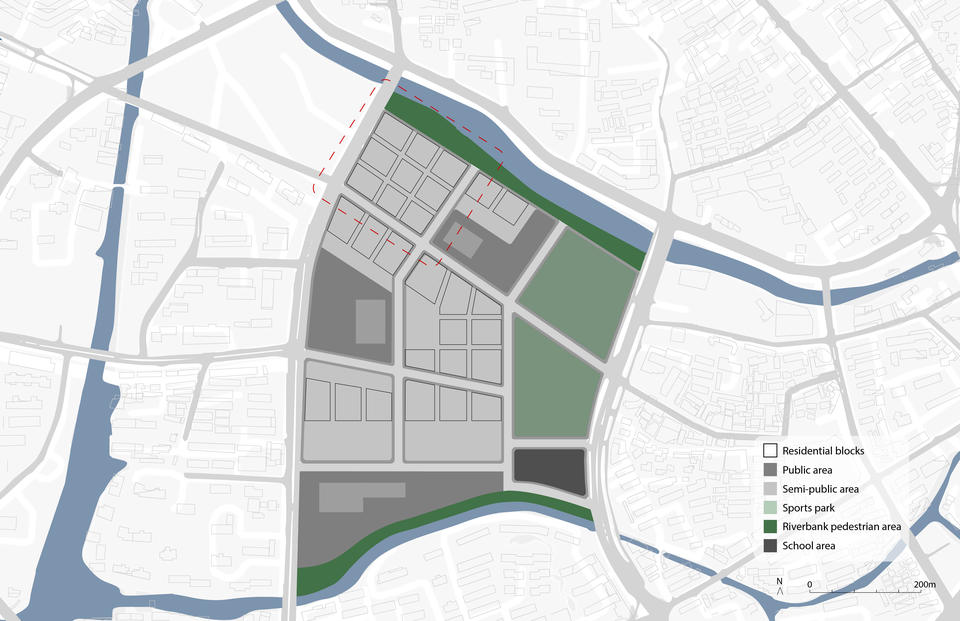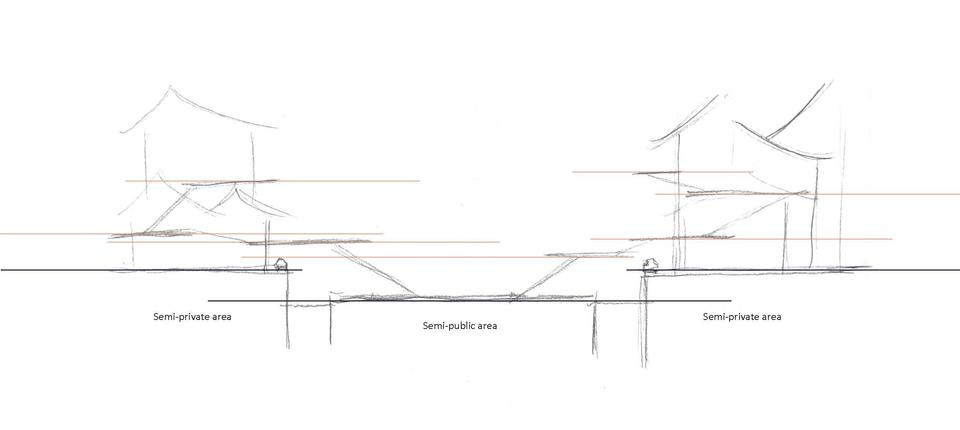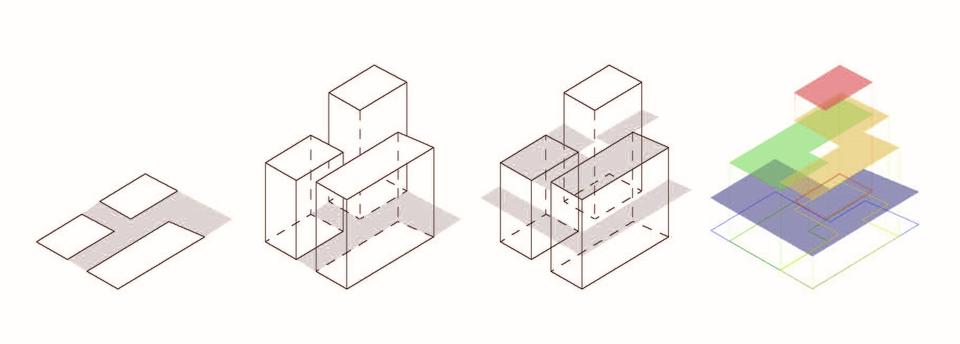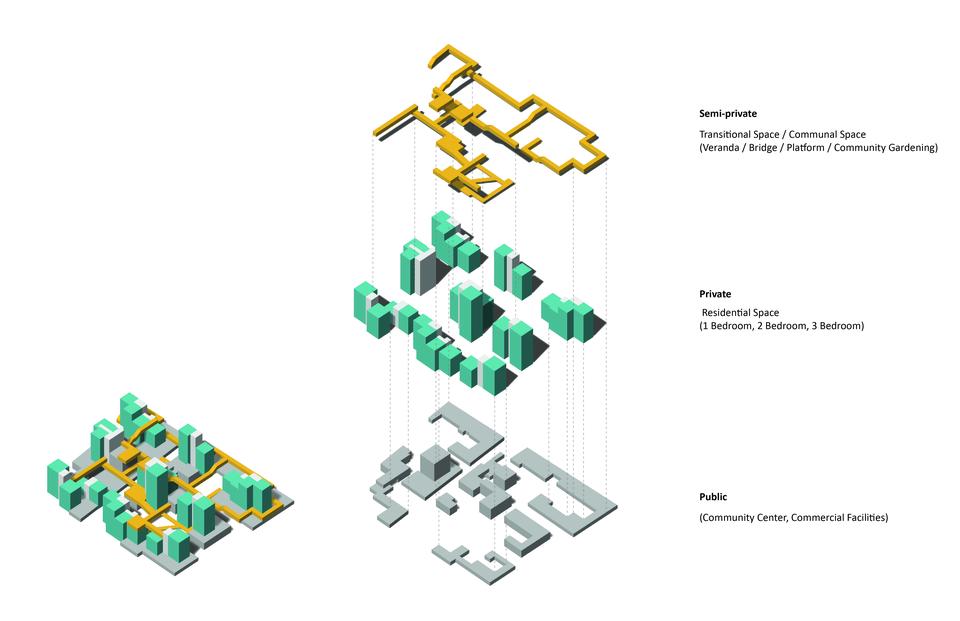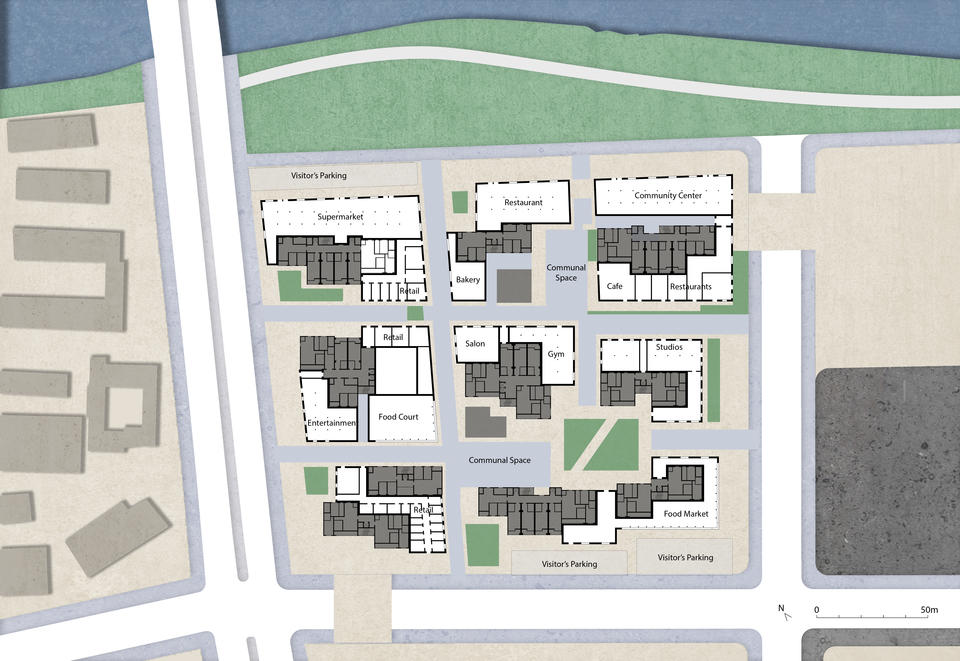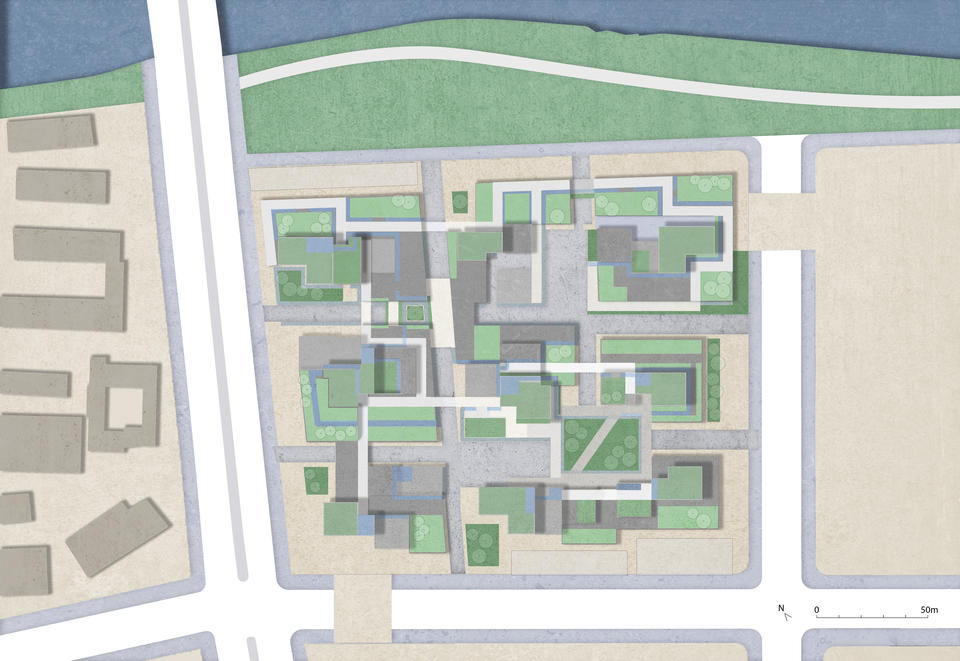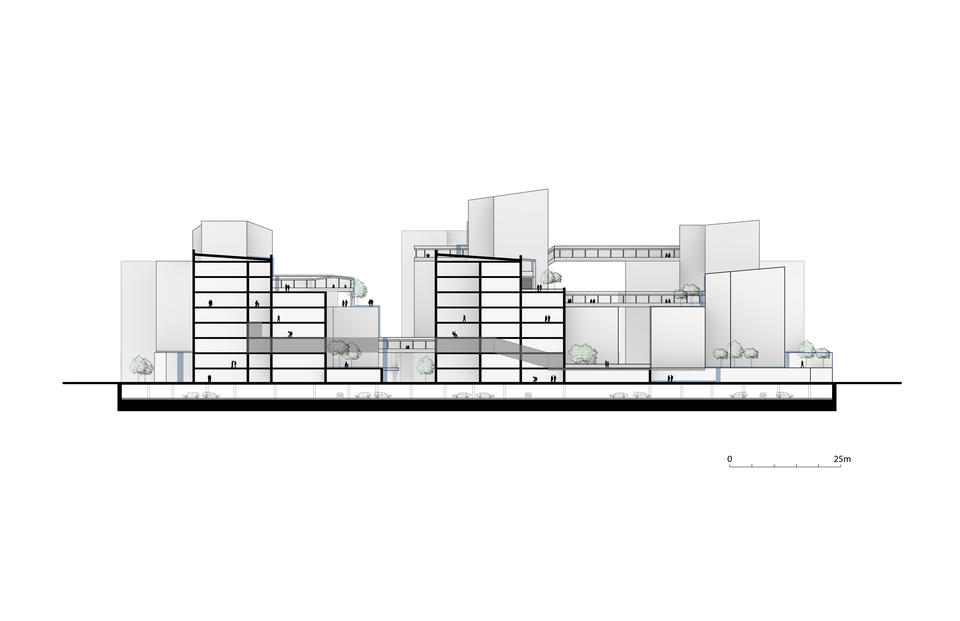Weiyi Xia
Urban living with nature
Image
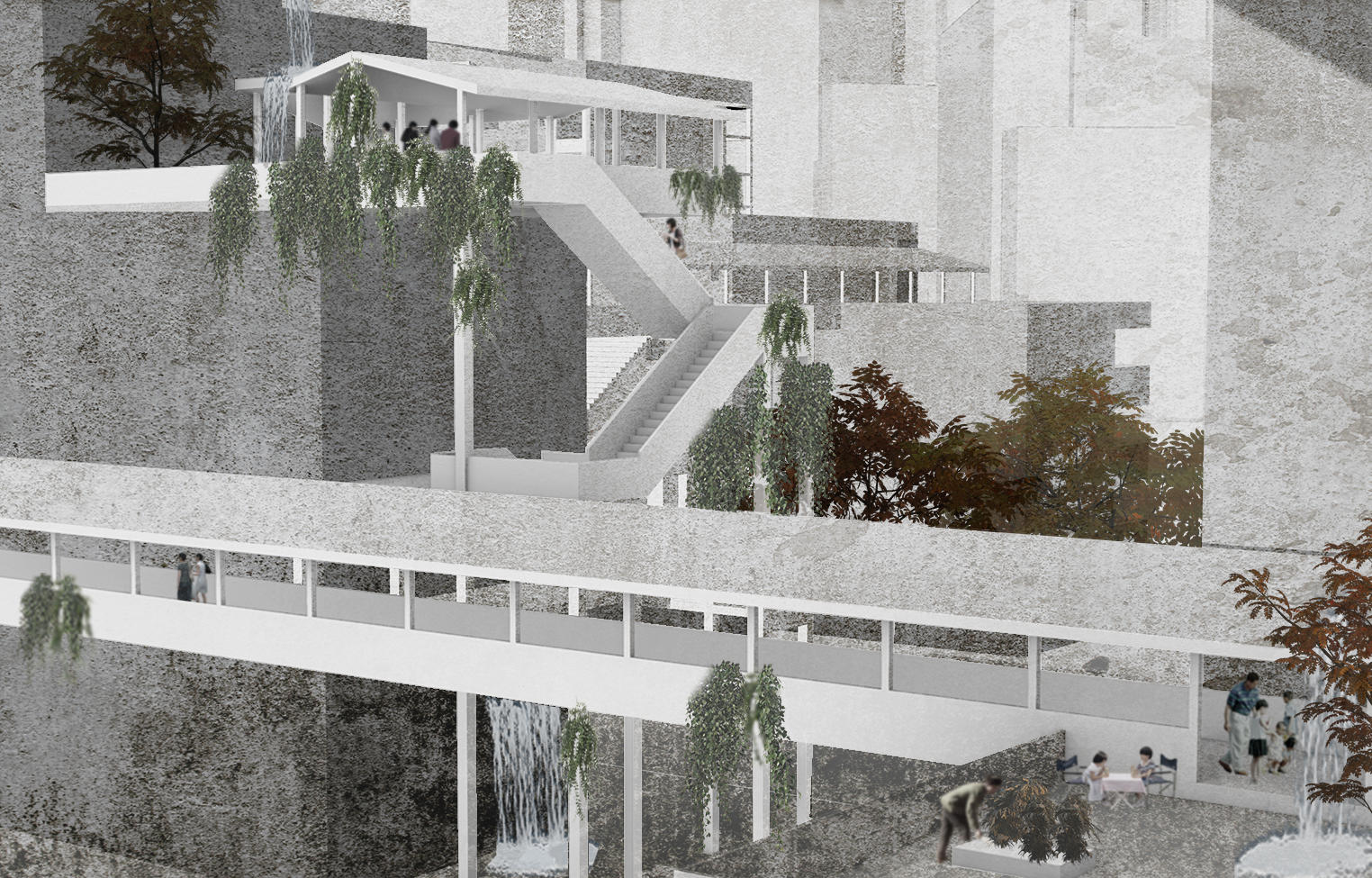
Thesis Statement
Wuxi is a city built on the regional river system. For thousands of years, the city layout developed along with the river channels. The Grand Canal, which goes through the city core and collaborates with the natural rivers, served people’s daily living, farming, and transportation needs. Social life among residents had also developed at the communal and transitional spaces along the rivers, mainly at the intersections where the bridges were. As Wuxi’s industry and commerce developed rapidly in the 20th century because of the convenient water transportation system, Wuxi’s urban area expanded widely in a short time and embraced the mountains and the lake Tai. Wuxi became a city with rich and beautiful natural elements of rivers, mountains, and lakes, which also bred profound cultural background. However, Wuxi’s overwhelming urban expansion happened too fast and lacked sophisticated urban planning considerations. This decision has isolated the urban zones and landscape zones, as well as cut off citizens’ daily access to natural areas. Meanwhile, there are both overdevelopment and underdevelopment situations in residential areas in the city. While there are plenty of enclosed, single-use zoning residential communities newly built with high rises, there are also old derelict neighborhoods abandoned in the old town at the core of Wuxi. Because of the space limitation in the high-density overdevelopment areas, the natural elements are introduced as garden or landscape design on small scale in the neighborhood as more a selling point than actual functionality. As a result, there is less communal space, and fewer social activities or interactions happen between residents. Although low-density underdevelopment areas have space for greens to grow and for residents to interact and keep a close relationship with each other like the traditional lifestyle, the living condition is severe for anyone to continue living there. And the low-density housing does not meet the population needs nowadays anymore.
As such two extreme situations existing at the same time in Wuxi, citizens’ living quality still has a large room for improvement that would recur the beautiful vision of living in a “natural city” with the “natural” traditional lifestyle. In response, this design proposal proposes a solution in the middle for a new residential area development typology. It is reconstituting areas of my research into new housing types. In this new scenario, the standard high-rise residential area’s spatial and structural layout is redesigned for mix-used purposes. Nature here is not just a landscape attraction for aesthetics, but also an incentive that stimulates and leads more social activities to happen in the residents’ contemporary daily life in the high rises, as the traditional lifestyle had. The site is one of the derelict and abandoned residential areas in the city core, with a total area of around 2 million square feet. Since the existing houses are heavily damaged and have no value for preservation, this design proposal tears down the entire area to build a new diverse residential neighborhood with a new social model for 3000 households.
Compared to the common residential area design where it is enclosed for only housing purpose, the proposed housing area includes space of different hierarchy of privacy, from public to semi-public to semi-private to private space. More communal platform space and bridges are added at different heights to reduce the height difference for meaningful contact in vertical. Water, as an active natural element, is introduced to the building design as a circulation guider, flowing through the building complex from top to bottom along with the circulation path, encouraging and guiding the residents to go through one space to another. As the symbolic meaning of water as the nutrient for all living, water makes green life possible to happen anywhere it has flown through in the building complex, like landscape or community gardening, etc. This typology also includes an attendant landscape architectural system that integrates the building into the environment. The greens become the natural sun shading, noise reduction, and provides a pleasant environment where social activities could happen. This design proposal is not only designing the residential buildings but also an alternative lifestyle where the traditional living and social styles are adopted to the contemporary settings that increase the urban vitality.
This proposal raises the question of rethinking what role nature could play in contemporary urban life in China. For contemporary urban development, which is controlled by the government, the historical “Shan-shui” concept becomes a cliche metaphor and represented as the rapidly developed landscape tourist programs. Meanwhile, this design proposal proposes a way to integrate nature into people’s lives much more functionally and spatially. However, here come more questions. Is it possible to do such a development anywhere in China? Can we separate this historical and natural concept from contemporary politics? Is this a Chinese problem or it is a globalization problem? What could “Shan-shui” city look like in the future? These are the questions worth us, the designers, consider in the long term.
Wuxi, City Built on Water
Old View of Wuxi
Image
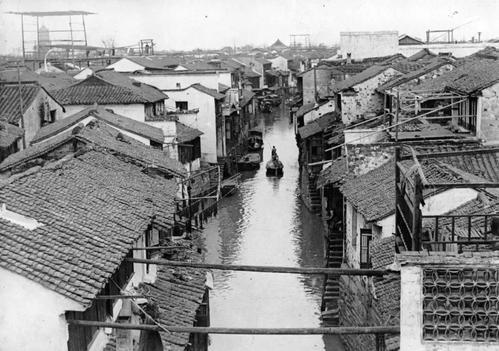
Image
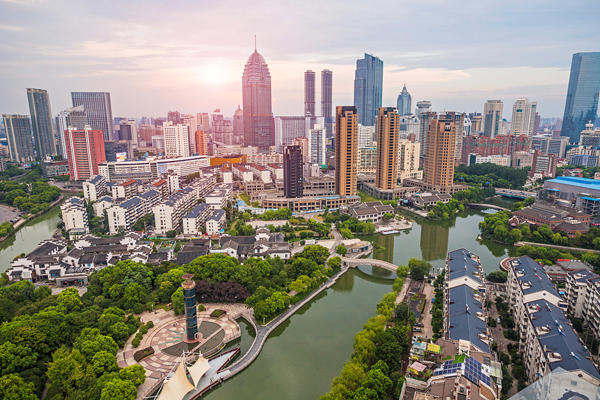
City's Urban Planning and Residential Community Research
Design Proposal
Site Masterplan
Design Concept Sketches
Design Drawings
What the life would look like living here
Image

Image
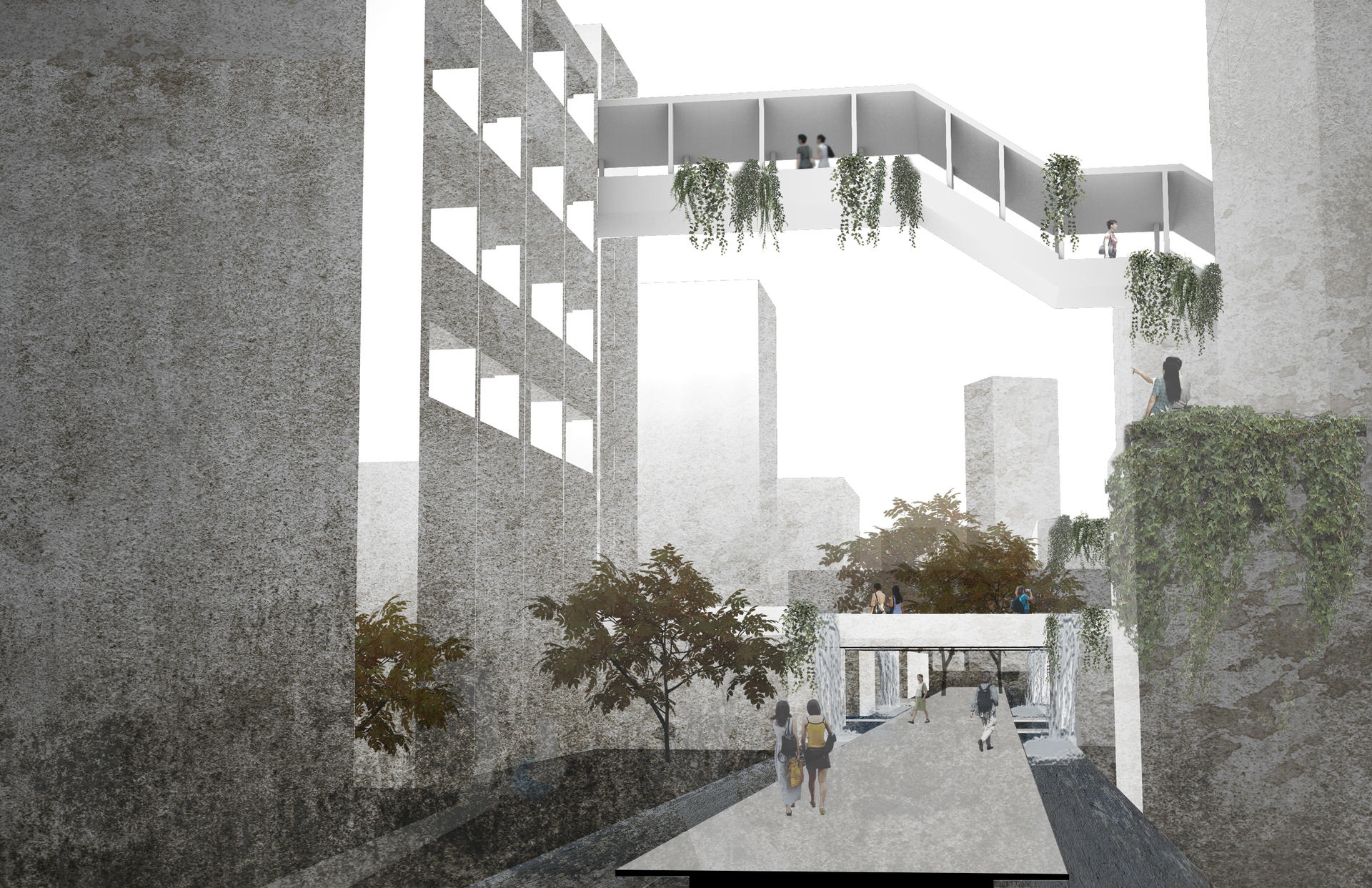
Image
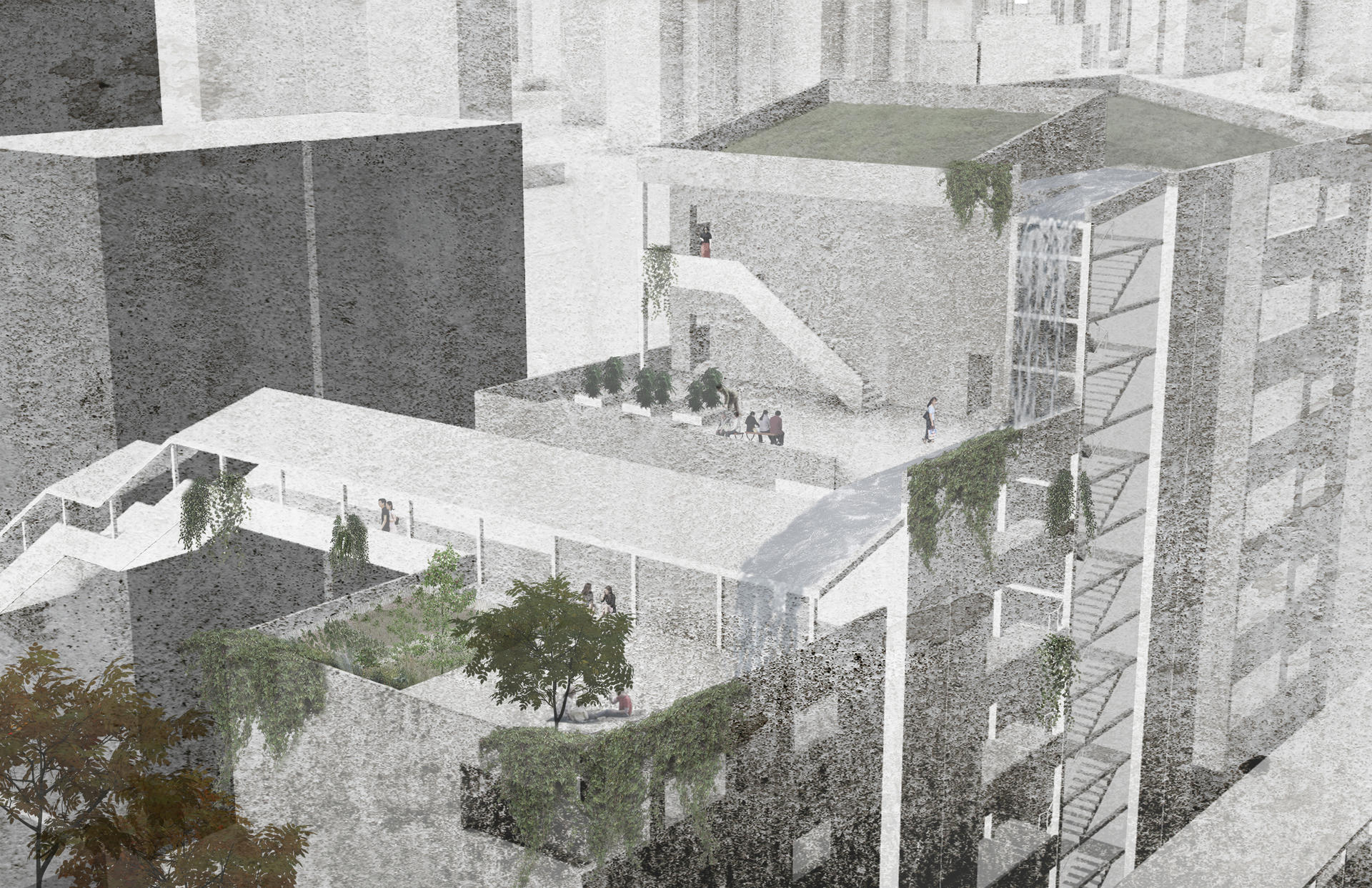
ANNONTATED BIBILOGRAPHY
-
Gao, Yiyuan. 无锡近代城市规划历史研究 [A Study on the History of Wuxi Early-modern Urban Planning]. Wuhan: Wuhan University of Technology, 2017.
-
Gehl, Jan. Life between Buildings. Beijing: China Architecture & Building Press, 2002.
-
Guo, Suqian. 居民社会网络与住区公共空间的互动研究——以无锡三个小区的调研为例 [A Study on Interaction between Resident Social Network and Residential Communal Space: A Case Study of Three Residential Neighborhoods in Wuxi]. China Academic Journal Electronic Publishing House, 2015.
-
Huang, Huidan. 城市自然要素景观空间规划研究——以无锡市为例 [A Study on Landscape Spatial Planning of Urban Natural Elements: A Case Study of Wuxi]. Nanjing: Nanjing Forestry University, 2007.
-
Lynch, Kenneth. The Image of the City. Cambridge, MA: MIT Pr., 1979.
-
Marshall, Stephen. Streets & Patterns. London: Spon Press, 2015.
-
Norberg-Schulz, Christian. Genius Loci: towards a Phenomenology of Architecture. New York: Rizzoli, 1996.
-
Wang, Yan. 水网格局影响下的大运河——长江三角洲地区历史城镇发展与变迁[The Interaction of Water and City: Transformation, Urbanism, Resilience]. Nanjing: Southeast University, 2019.
-
Wu, Yangyang. 江南水乡传统聚落核心空间景观特征的研究 [Jiangnan Traditional Settlements Core Space Landscape Characteristics of The Study]. Wuxi: University of Jiangnan, 2013.
-
Yang, Weihao. 江南传统民居建筑临水处理方式研究 [The Research of Waterfront treatment methods of Traditional residence of Jiangnan]. Wuxi: University of Jiangnan, 2016.


